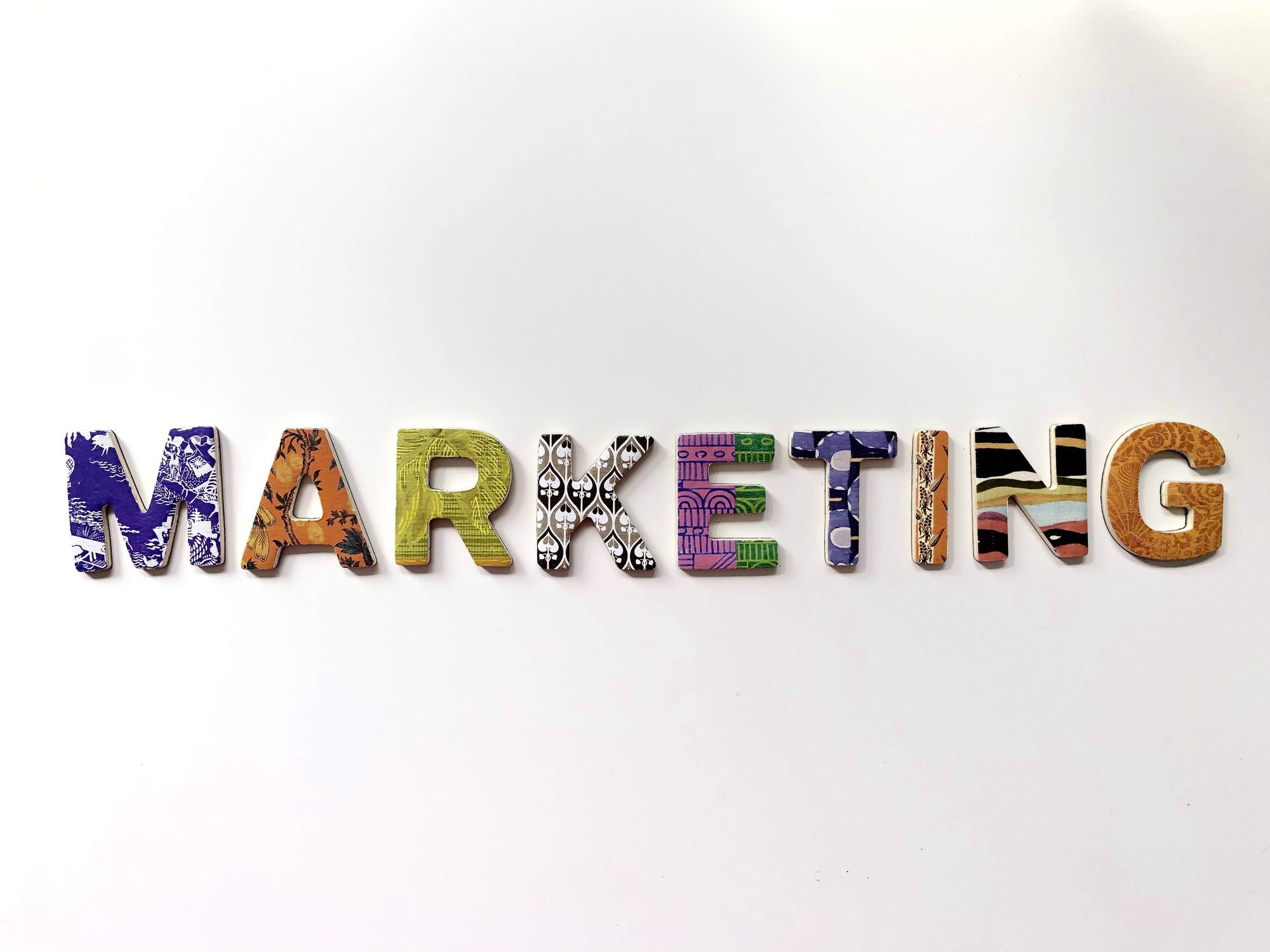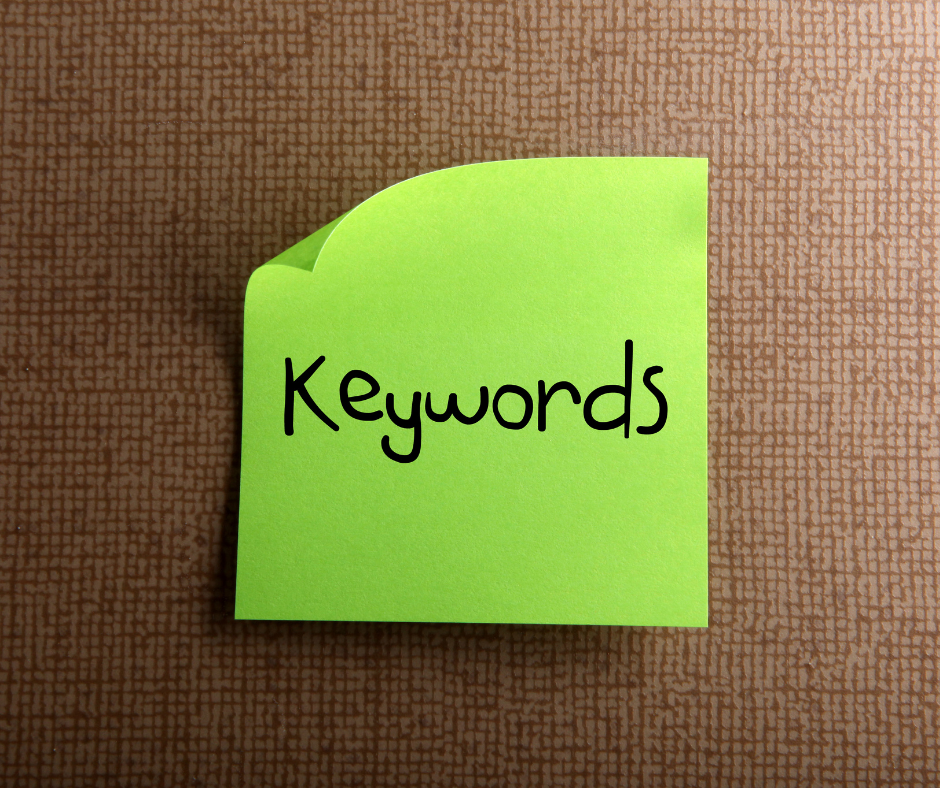Advertisement spending in the US is projected to surpass $242 billion this year. Advertising is only on the rise if we look at the past records. Is this your sign to start advertising your business? Beyond any doubt! No matter how big or small your business is, advertising is for everyone.

All you need to know is what kind of advertising will bring more sales for your company and promote your business. Not sure what kind of advertising will help you achieve your targets. Worry not because we will help you figure that out in this article- A list of 10 killer types of advertising to promote your business. Let’s get started!
This article will answer the following questions:
- What is advertising?
- What is the importance of advertising?
- What are the 10 popular forms of advertising to promote your small business?
- How can Deskera assist you?
What is Advertising?
Digital advertising spending by industry in the U.S. puts the retail sector at the top, with an annual expenditure of over $33 billion.
Advertising is a means of communication with the users of a product or service. Advertisements are messages paid for by those who send them and are intended to inform or influence people who receive them.
Advertising is always present, though people may not be aware of it. In today's world, advertising uses every possible medium to get its message through. It does this via television, print (newspapers, magazines, journals, etc.), radio, press, internet, direct selling, hoardings, mailers, contests, sponsorships, posters, clothes, events, colors, sounds, visuals, and even people (endorsements).
The advertising industry is made of companies that advertise, agencies that create the advertisements, media that carries the ads, and a host of people like copy editors, visualizers, brand managers, researchers, creative heads, and designers who take it the last mile to the customer or receiver.
A company that needs to advertise itself and/or its products hires an advertising agency. The company briefs the agency on the brand, its imagery, the ideals and values behind it, the target segments, and so on.
The agencies convert the ideas and concepts to create visuals, text, layouts, and themes to communicate with the user. After approval from the client, the ads go on air, as per the bookings done by the agency's media buying unit.
What is the Importance of Advertising?
Advertising plays a very important role in today’s age of competition. Advertising is one thing that has become a necessity for everybody in today’s day-to-day life, be it the producer, the traders, or the customer. Advertising is an important part. Let's have a look at how and where advertising is important.
Just imagine television or a newspaper or a radio channel without an advertisement! No, no one can imagine this any day. Advertising plays a very important role in customers' lives.
Customers are the people who buy the product only after they are made aware of the products available in the market. If the product is not advertised, no customer will come to know what products are available and will not buy the product even if the product was for their benefit.
One more thing is that advertising helps people find the best products for themselves, their kids, and their family. When they come to know about the range of products, they are able to compare the products and buy so that they get what they desire after spending their valuable money. Thus, advertising is important for the customers.
Advertising helps educate people. There are some social issues also which advertising deals with like child labor, liquor consumption, girl child killing, smoking, family planning education, etc. thus, advertising plays a very important role in society. Talking about how advertising can help bring social change, learning about emotional marketing will interest you to.
Now that we have understood that advertising is rather essential to take your business to great heights, let us find out what are the various types of advertising to help you boost your business.
Types of Advertising to Boost Your Business
Different businesses have different requirements, so it’s important to make sure you are putting the right advertising to use. Hence, to help you make an informed decision, we have put together a list of types of advertising to help with your business.
Social Media Advertising
Social ad impressions are up 20%, year over year.
Social media advertising is a well-known advertising system for private companies in light of the fact that the expense is somewhat reasonable, and you can be exceptionally particular with the crowd you target.
For instance, assuming you own a retail store, you can utilize social media advertising focusing on choices to limit the crowd so that the main individual of a specific segment living inside a specific geographic area of your store is served your social advertisements. Here are some of the effective social media platforms for your advertising.
As the largest social media platform in the world, it’s safe to say that Facebook is a reliable choice when deciding where to advertise. Facebook is popular among a wide variety of demographics, including gender and age, which means there’s a good chance your target audience is engaging with the platform, too.
Aside from allowing Facebook users to connect with one another and share content online, the platform also offers merchants the opportunity to advertise their products and services online.
- Build brand awareness: Increase your reach and get your products in front of potential customers.
- Consideration: Direct traffic to your website, harness lead generation through opt-in emails, blog posts and content and reach out to potential customers through Messenger. Spot potential leads.
- Conversion: Set up a Facebook Shop to give customers a more seamless shopping experience, drive traffic to both your online and brick-and-mortar stores, and increase conversion rates.
Facebook advertising allows companies to target customers by location within a 5-mile radius, occupation, interests, past activity, and several other valuable data points.
Pricing for Facebook ads varies depending on several factors, including the audience you’re trying to target and the budget you set for your ads. However, as a rule of thumb, the more ad spend, the more efficient Facebook’s algorithm becomes at spending your money and increasing your ad performance over time.
As the go-to platform for discovering breaking news and engaging with small- and big-name influencers, Twitter has been one of the most popular social media channels since its launch in 2006.
Twitter advertising offers two options for brands to create ads:
Quick Promotions: Twitter automatically promotes Tweets to your target audience. All you have to do is choose a promotable Tweet from your timeline and specify your target audience, and Twitter will do the rest of the work for you.
Twitter Advertisements: These ads are objective-based, meaning you first have to choose your preferred business objective, and Twitter will only bill you for actions that align with your goal.
TikTok
Although a relatively newer player in the social advertising game, TikTok holds huge potential for reaching potential customers, especially younger audiences.
Many of TikTok’s social commerce capabilities have primarily focused on product ads that appear as native videos on users’ “For You” feeds. The ads are full-screen and appear for nine seconds, just like an organic TikTok post.
Under each advertisement, users can tap the “Shop Now” button, which brings them directly to the merchant’s eCommerce site to complete their checkout.
Besides in-feed ads, other ad options on TikTok include Brand Takeovers, which means that your ad will be displayed as soon as a user opens the app, or a Branded Hashtag Challenge, which encourages user-generated content through trending hashtags and fun video challenges, like a popular dance or creative filter.
A place not just for your photos or videos to stay connected with your friends, what we have here is an online advertising platform for your products and services. Instagram is an ideal platform for brands with products that are visually appealing and easily incorporated into visual media.
With an engagement rate 58% higher than Facebook’s and 2,000% higher than Twitter’s in 2016, Instagram holds a massive user base, although one that’s largely younger than other advertising platforms.
So, if your business and target audience fits both of those characteristics, Instagram advertising might be the best option for you. Although organic posts and Instagram stories can be great ways to boost traffic to your website, Instagram ads can be directly linked to your product page or another landing page, allowing for quick and easy engagement with your products.
Wondering when is the best time to post on Instagram? Refer to this article- When is the best time to post on Instagram in 2022?
Like Instagram, Pinterest is a highly visual platform decorated with whimsical wedding photos, cooking videos, and fashion reels. But with that being said, Pinterest is largely geared toward women, with a 71% female user base.
Considering Pinterest users use the platform to find and purchase products, Pinterest is one of the ideal platforms for social media advertising. Promoted pins easily blend into the Pinterest boards without distracting users as some other platforms do. In fact, 85% of weekly Pinners have made a purchase based on Pins they see from brands.
Especially beneficial for eCommerce retailers, Pinterest has a highly targeted search engine that allows brands to advertise their products by promoting their highest-performing pins.
Unlike the other social media platforms, LinkedIn is a more professional platform meant for people to network with on a more professional never. As the world’s largest professional network, LinkedIn holds a large professional user base and is able to target customers based on job qualifications. Thus, LinkedIn advertising is largely geared toward a corporate audience.
Considering 69% of LinkedIn US users earn $50,000 or more per year, this platform tends to hold the highest average disposable income and high-quality leads in certain industries.
However, unlike most other platforms, which focus on B2C advertising, the nature of LinkedIn makes it better suited to B2B advertising campaigns. So, service businesses and B2B product businesses tend to get better results on LinkedIn than other platforms.
There are four types of LinkedIn ads:
- Sponsored content: These ads, often through photos, videos, or carousels — are displayed in LinkedIn’s newsfeed in order to reach a larger audience.
- Sponsored Messaging: This is LinkedIn’s version of email marketing, but rather than sending a message to the user’s inbox, it goes to their LinkedIn inbox, where the user can then interact either with a chatbot or a human customer representative.
- Text and Dynamic ads: Only visible to desktop users; text ads are small advertisements displayed at the top of the screen above the user’s newsfeed.
- Lead Gen forms: Using pre-filled forms in your LinkedIn ads, you can collect quality leads at scale.
Head over to our article- Social Media Marketing to explore more about the capabilities of social media to boost your business.
Pay per Click Advertising
65% of consumers click on PPC ads.
Pay-per-click (PPC) is an online advertising model in which an advertiser pays a publisher every time an advertisement link is “clicked” on. Alternatively, PPC is known as the cost-per-click (CPC) model.
The pay-per-click model is offered primarily by search engines (e.g., Google) and social networks (e.g., Facebook). Google Ads, Facebook Ads, and Twitter Ads are the most popular platforms for PPC advertising.
In order for ads to appear alongside the results on a search engine (commonly referred to as a Search Engine Results Page, or SERP), advertisers cannot simply pay more to ensure that their ads appear more prominently than their competitor’s ads.
Instead, ads are subject to what is known as the Ad Auction, an entirely automated process that Google and other major search engines use to determine the relevance and validity of advertisements that appear on their SERPs.
Mobile Advertising
In 2021, mobile advertising spending reached a record 288 billion U.S. dollars worldwide.
Mobile advertising refers to ads and ad campaigns expressly designed for mobile devices. In this context, “Mobile devices” include smartphones, tablets, or wearable devices. Mobile ads can appear within apps, on websites viewed from mobile devices, or on social media platforms viewed through mobile devices.
According to the World Advertising Research Center, two billion people already access the internet via only their smartphones. That’s the equivalent of 51 percent of all mobile users worldwide. In just six short years, 72% of all internet users will access the internet exclusively via mobile devices.
Mobile also enables location marketing in a way that desktops can’t match. And, because consumers have their mobile devices with them more often than they are with their desktops, advertisers have more opportunities to reach them.
Here are a few different types of ads for mobile advertising that you must consider:
In-App Advertising
In-app advertising revenue is expected to be more than $70 billion in the U.S and almost $184 billion worldwide.
It’s impossible to talk about mobile use without talking about apps. And so, if you’re going to test mobile advertising, you owe it to yourself to test app advertising. After all, it’s not like there’s a shortage of apps. If you can pick the right apps and show the right creative, in-app advertising can work really, really well.
Mobile video advertising
Mobile videos work if you can develop enough creativity and test it fast enough before ad creative starts to fatigue.
Pop-ups
These are just like the pop-ups (aka “overlays”) you’ve been seeing on web pages for years. They’re just smaller and designed for mobile screens.
Native ads
Native ads are published either in social media feeds or on websites. They’re called “native” because they look like the content surrounding them. Native ads must use high-quality content. They also tend to “soft sell” advertisers’ products, if they overtly mention them at all.
Voice ads
Voice search is not just coming, it's here. And while paid voice search hasn’t really taken hold yet, it won’t take long. Don’t overlook mobile advertising channels, either. Almost all of the types of mobile advertising mentioned above can run on social media, display ad networks, search ads, and even Amazon ads.
Location-based advertising
Mobile users have their devices with them almost all the time. That opens up a world of opportunities if you’ve got a local business or a business with brick and mortar locations.
Banner advertising
Yes, even the much-maligned banner ad has a place in mobile advertising. There’s plenty of inventory for mobile banner ads, so if you can cherry-pick where these ads appear and pair that with great creativity, mobile banner ads can work.
Text message advertising
98% of text messages get read instantly. This makes text message advertising a great way to reach people directly on their mobile devices. Many businesses and organizations send text message advertisements based on intent signals and use text messages in conjunction with other forms of mobile advertising.
Print Advertising
82% of consumers report that they trust print ads.
Doing it a little old-fashioned way? It still works! Yes, print advertising, as traditional as it sounds it still happens to work. Print advertising used to be the primary advertising method for small businesses before the advent of digital advertising.
Now, print ad revenues are shrinking, and as a small business owner, you may find the cost is much higher than the cost of digital and social advertising. It’s also more difficult to measure the success of your print advertising campaigns since it’s almost impossible to prove how many people who saw your ads in print went on to make a purchase at your store or become a client of your business.
For some local businesses or businesses that target older, less digitally engaged audiences, print advertising can still be a good choice for your ad spend. Print advertising includes newspaper ads, magazine ads, and ads in brochures and flyers.
Broadcast Advertising
TV advertising accounts for 24.7% of the total media ad revenues in 2021.
Broadcast advertising is the advertising of services or products that uses out-of-home mediums to reach broad audiences: i.e., T.V., Radio, Billboards, etc. Billboards are a type of broadcast advertising like TV or radio. Normally, getting a TV spot, a radio ad, or a billboard ad is expensive and perhaps unattainable for small- and medium-sized businesses.
With Blip, billboards are now accessible, targeted, and flexible. They are an option for businesses that have only ever been able to afford digital advertising in a saturated digital ad market.
In the age of digital advertising, small- and medium-sized businesses use Facebook, Instagram, and Google Ads to drive results and ROI, but digital advertising alone can only go so far.
Adding billboards to your existing marketing is an effective way to see an uplift in results and create brand awareness. It’s important to create a diverse marketing mix to effectively advertise your brand, get recognition, and build brand awareness. Blip builds brand exposure when and where they want it in a low-cost and budget-friendly way.
Some people only consider broadcast advertising when they need to “shout” at their customers but don’t consider it as a long-term strategy. Billboards amplify your brand’s message, but not just as a one-time “shout.”
While short-term campaigns can be effective for some advertisers, billboards can and should be used as a long-term strategy. When added to existing targeted ads and SEO, your message becomes part of a consistent message for customers to see at different touchpoints in their journey. Consistent broad exposure leads to familiarity and trust with your audience.
Out of Home Advertising
In 2021, out-of-home advertising spending reached over 34 billion U.S. dollars worldwide.
Out-of-home advertising (OOH), also called OOH media, is any visual advertising media found outside of the home. This can include billboards, indoor and outdoor signs, ads on street furniture like bus shelters or benches, in transit areas like airports or train stations, and place-based ad media like you might see at a stadium or in the cinema.
These various OOH media formats account for thousands of locations and millions of screens around the world. OOH is an expansive category and today represents spending of about $29 billion across key markets around the world.
Some of the world’s most important advertisers, including McDonald’s, Apple, Amazon, HBO, and Coca-Cola, all make regular and extensive use of various OOH formats in their campaigns.
Now, why in the age of online advertising would you need out-of-home advertising? Online advertising can be a little frustrating for media buyers. Ad blockers are in widespread use, and those users who don’t use ad blockers are so bombarded with advertising that it’s difficult to stand out.
If an ad’s not above the fold on a popular site, its odds of being seen are not the greatest. These aren’t worries with out-of-home. Outdoor advertising signage formats like billboards, digital screens, and the rest of the out-of-home family are unskippable.
They’re also unblockable, short of holding a hand up in front of your eyes. There’s no fold to be lost beneath and no shortage of visibility. In other words, they’re the ideal vehicle for the big, colorful messages that brands are trying to get out.
Today, OOH is enjoying significant upwards momentum, with savvy marketers devoting more of their budgets to OOH media. Of traditional media categories, it is the only one currently growing, at just over 2% in 2018. The industry as a whole reached about $33 billion in sales in 2021.
Direct Mail Advertising
70% of consumers say direct mail is more personal than online interactions.
Direct mail is a type of advertising medium in which messages are sent to target customers through the mail. The terms "direct mail" and "mail-order" are often used interchangeably. The best way to distinguish these similar yet different terms is to remember that direct mail is simply an advertising medium, like print or broadcast media.
Print media messages are delivered through the printed word, usually in newspapers or magazines, while broadcast media messages are delivered through the airwaves, on television, or on the radio. In direct mail, advertising and other types of messages are delivered through the mail.
Mail order is a particular way of doing business, like retail or personal selling. A mail-order business delivers its products through the mail. It may also use direct mail to send out advertising messages or catalogs. Direct mail is simply one advertising medium that direct marketers employ, although it is among the most frequently used.
Direct mail is a particularly attractive option for small business owners, as it can communicate complete information about a product or service and reach almost any conceivable target group, all for a relatively low cost.
Direct mail can provide the basis for a business, or it can be used to supplement a company's traditional sales efforts. For example, a small business could use direct mail to inform potential customers about its offerings, then follow up with a phone call or a visit from a salesperson.
Owners of start-up businesses may find direct mail an effective method of creating awareness and interest in a new product, while owners of existing companies may find it useful in generating new business outside of their usual customers or geographic area.
Another advantage of direct mail is that it is testable, so that entrepreneurs can try out different sales messages on various audiences in order to find the most profitable market for a new product or service.
Product Placement
In the United States, which accounts for 56.5% of the global market, product placement revenues grew 15.4% to $11.63 billion in 2019.
Product placement is a marketing technique that promotes a brand by placing the branded product in a non-advertising context, usually a TV show or a movie. The product is inserted into the program and is often seen as a natural part of it.
With product placement, companies take advantage of popular motion pictures or TV shows where many products are used. These movies and shows usually require food, drinks, cars, and clothes as elements of the narrative.
In this regard, some firms decide to place their brands there with the purpose of promoting them in a subtle manner. Sometimes the company wants to associate the brand with a particular film, movie character, or TV program.
The product or brand can be seen in the background, mentioned in the narrative, or be part of the action. The appearance can be paid or not paid, depending on the specific agreement between both parties.
Product placement has been steadily growing as a marketing technique, and now most firms intensively use it to promote their brands.
Product placement advertising leads consumers to make an unconscious connection between the scene of a movie and a brand, like associating the powerful 007 James Bond with the luxury Aston Martin sports car he drives. It’s proven that 52% of North Americans trusted product placement ads, and 49% took action after seeing such an ad.
If you choose product placement advertising, be intentional with where and how you wish to place your products and ensure it matches your brand image.
Podcast Advertising & Radio Advertising
Podcast advertising spending is estimated to reach $369 million this year and will increase to $747 in 2022.
A radio show is broadcasted via airwaves using radio frequency. Most radio shows only reach the geographical area they serve, but large syndicated shows are aired on multiple stations across the country.
A podcast is a show made available on the internet for streaming or downloading to a mobile phone, computer, or device. Podcasts are typically available as a series and listened to episodically.
Ads on the radio are sold according to dayparts. Typically, a station's daypart lineup will look something like the following: 6 am-10 am, 10 am-3 pm, 3 pm-7 pm, and seven pm-midnight.
Drive times, or mornings and evenings when people are commuting, are usually the most popular times of day and also when each station has the most listeners. The "rates,” or what the station charges the advertiser, will reflect that.
Ads are sold on podcasts that target the type of audience the advertiser wishes to reach. For instance, an advertiser selling baseball sporting equipment would want to find podcasts niched around baseball.
Most ad spots are sold per episode and placed during the beginning (pre-roll), middle (mid-roll), or at the end (post-roll) of a podcast episode. We all know that radio ads go on forever! Sometimes you may hear 8-10 ads played back-to-back during one segment. This creates an over-saturated ratio of ads to show content. Radio Show Example; 10: 30-second ads per 30 minutes of content = ad/content ratio of 5/30min or 1/6 min.
A typical podcast episode runs for 20-60 minutes. And most podcasts will only air 1-2 ad spots per episode. This creates a very low ad content to show content ratio. Podcast Example; 2: 60-second ads per 60 minutes of content = ad/content ratio of 2/60min or 1/30min.
Radio shows can be engaging, but most cover general topics, including politics, sports, and finance. You won't find niched shows that meet one's precise interests. Podcast listeners are extremely engaged listeners as they choose the shows they listen to. Podcast shows fall in every niche and category imaginable, so you're sure to find shows that align with your interests.
Consumer-Generated Advertising
84% of consumers say they trust peer recommendations above all other sources of advertising.
Consumer-Generated Advertising (CGA), also known as User-Generated Content (UGC), refers to brand content created by users, also known as everyday people who are likely not professional advertising executives nor an employee of the company that owns the brand.
Anyone with a smartphone or video camera can easily create content - like a picture, video, or blog post about a brand or product. Positive or negative, user-generated content builds brand awareness with other people that see that video or blog post online, like on websites, social media, or online forums.
Why can Consumer Generated Advertising create such a positive impact on sales? Many research studies have been performed that validate what seems to be common sense people are more likely to trust and believe the viewpoints of 'regular people' rather than a company or agency promoting a brand for commercial benefit.
In fact, according to Nielson, 83% of people trust recommendations from friends and family, while only 56% of people trust information in brand emails they signed up for. The authenticity and believability of core messages of consumer-generated advertising are often more effective than traditional advertising.
CGA can also have a financial benefit, being an inexpensive method of generating awareness. Consumers generating content do not receive payment from a company, although sometimes they do win prizes, prestige, publicity, or promotional items depending on the campaign.
Among hundreds of successful CGM examples that can be found on the internet, the one that gathers the most attention is Apple’s long-lasting #ShotOnIphone campaign.
This initiative was created as a response to the constantly voiced complaints made by iPhone users that weren’t satisfied with the quality of the pictures taken with their devices.
To prevent severely damaging the company’s reputation and revenue streams, Apple’s marketing department decided to use CGM and show real-life photos taken by regular users with their iPhones that have blown the Internet away with their quality.
Additionally, this campaign allowed Apple to turn its customers into a welcoming community and achieve cult status among its loyal clients. In conclusion, consumer-generated advertising is proving to be one of the most reliable methods for winning over new clients in the social media era of the Internet.
The key to a profitable CGM campaign is offering a company’s customers an exciting idea, supporting their content along the way, and rewarding them for their contributions and creativity.
How Can Deskera Assist You?
Marketing, in general, is a difficult one to get right, and if you are marketing to Millennials, it’s only going to get harder. However, once you have a good team and software like Deskera to ace your marketing to Millennials. Wondering why Deskera? Deskera CRM and Deskera CRM Plus are the tools you need to make that world of a difference from the way you process your sales, customers, and orders. The cherry on the top, Deskera, also has a set of some amazing landing page templates that will help you create yours. To learn more, take a look at this quick walkthrough.
Key Takeaways
- Advertising is a means of communication with the users of a product or service. Advertisements are messages paid for by those who send them and are intended to inform or influence people who receive them.
- Advertising is always present, though people may not be aware of it. In today's world, advertising uses every possible medium to get its message through.
- Advertising plays a very important role in today’s age of competition. Advertising is one thing that has become a necessity for everybody in today’s day-to-day life, be it the producer, the traders, or the customer.
- Social media advertising is a well-known advertising system for private companies in light of the fact that the expense is somewhat reasonable, and you can be exceptionally particular with the crowd you target.
- Facebook is popular among a wide variety of demographics, including gender and age, which means there’s a good chance your target audience is engaging with the platform, too.
- Twitter has been one of the most popular social media channels since its launch in 2006.
- TikTok holds huge potential for reaching potential customers, especially younger audiences.
- Instagram is an ideal platform for brands with products that are visually appealing and easily incorporated into visual media.
- Like Instagram, Pinterest is a highly visual platform decorated with whimsical wedding photos, cooking videos, and fashion reels.
- LinkedIn advertising is largely geared toward a corporate audience.
- Pay-per-click (PPC) is an online advertising model in which an advertiser pays a publisher every time an advertisement link is “clicked” on.
- Mobile advertising refers to ads and ad campaigns expressly designed for mobile devices.
- Print advertising used to be the primary advertising method for small businesses before the advent of digital advertising.
- Broadcast advertising is the advertising of services or products that uses out-of-home mediums to reach broad audiences.
- Out-of-home advertising (OOH), also called OOH media, is any visual advertising media found outside of the home.
- Direct mail is a type of advertising medium in which messages are sent to target customers through the mail.
Related Articles












